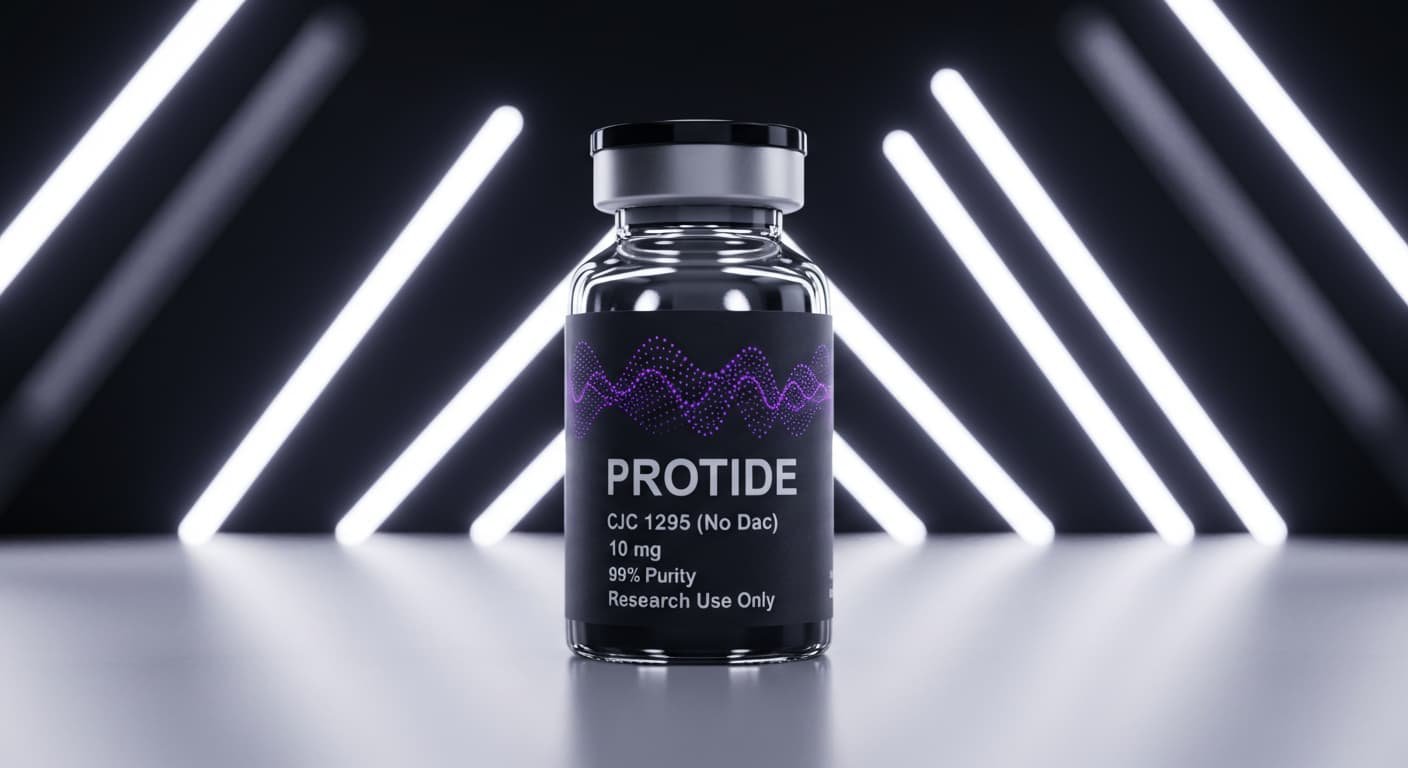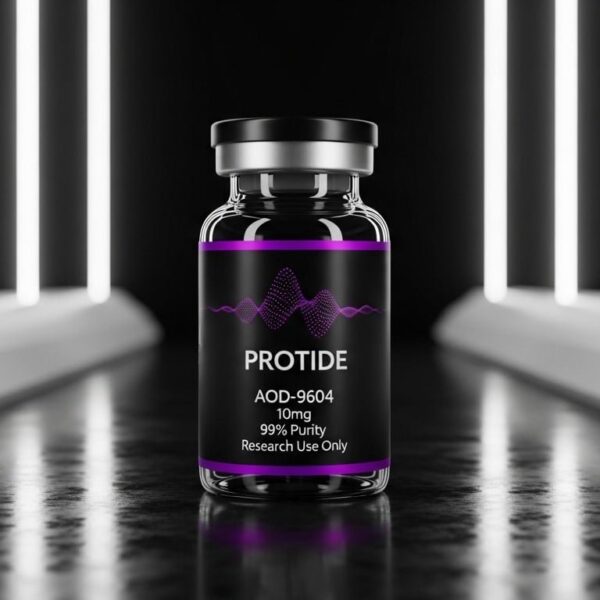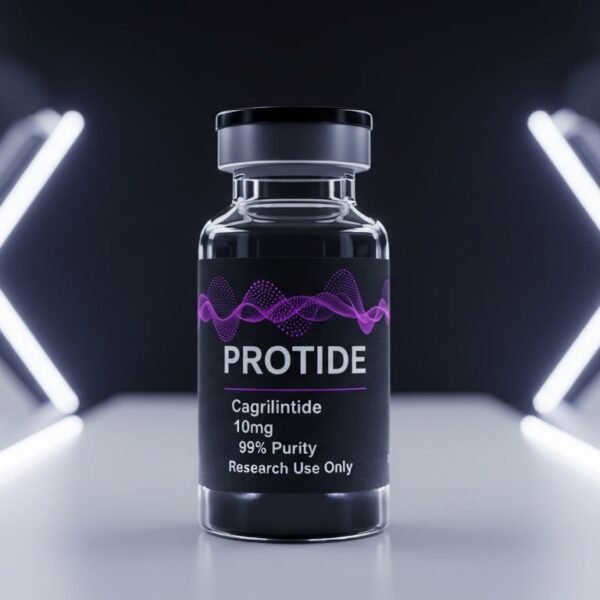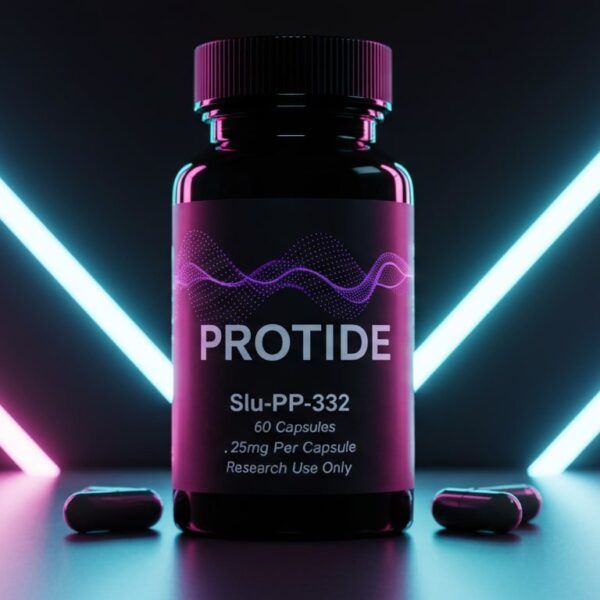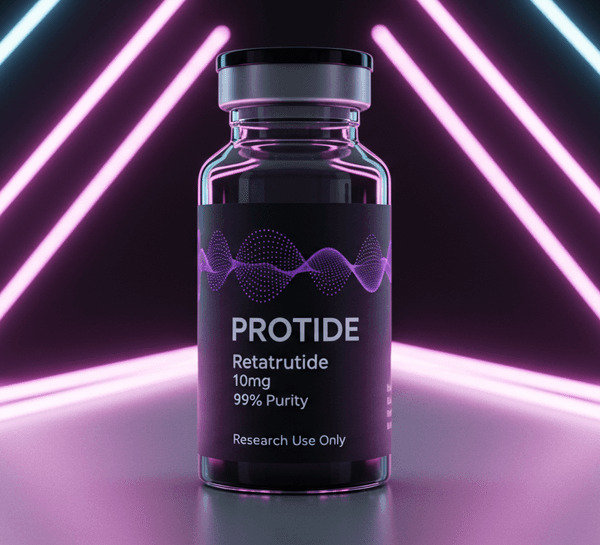$0.00
new
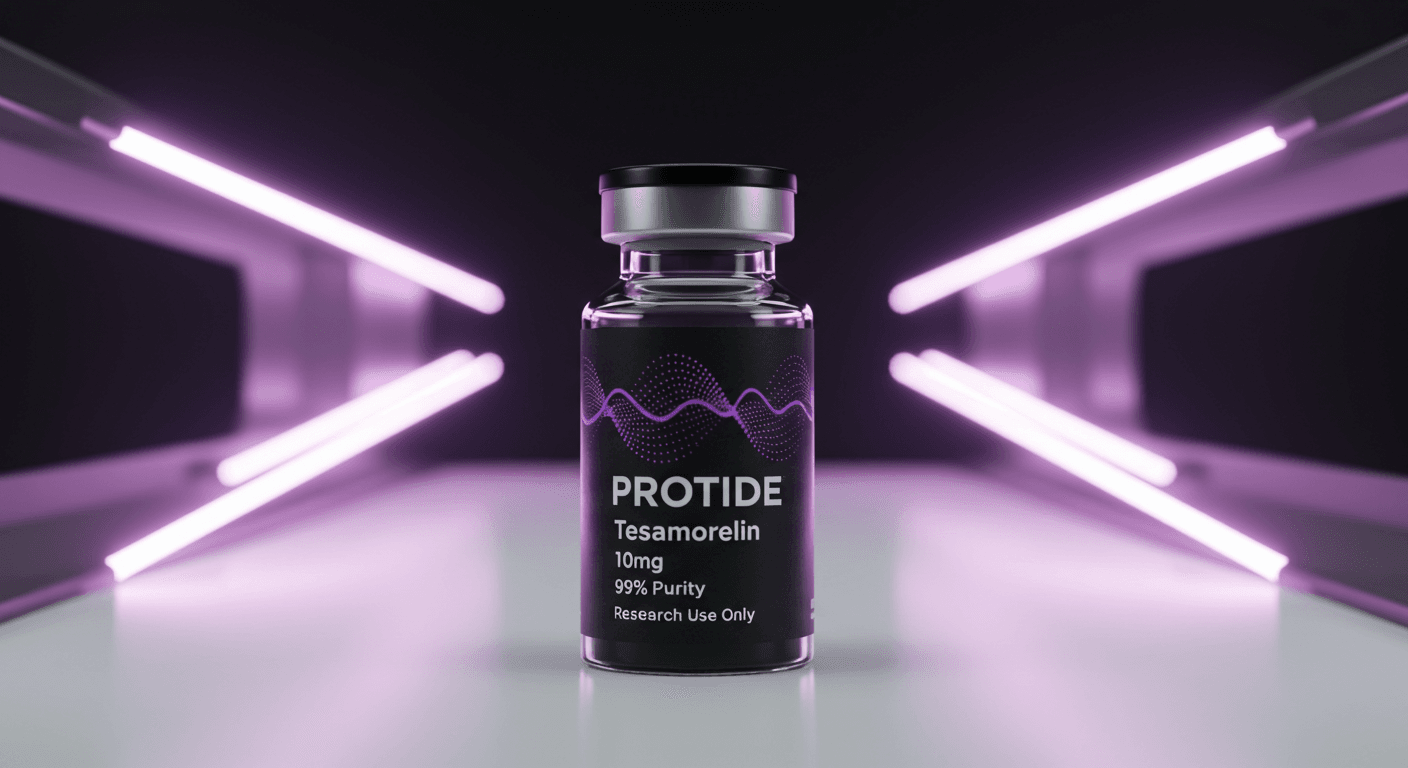
Tesamorelin 10mg
Tesamorelin: Muscle Growth, Fat Metabolism & Body Composition
Tesamorelin, a synthetic growth hormone-releasing hormone (GHRH) analog, has been studied for its potential role in stimulating natural growth hormone production, muscle growth, promoting fat metabolism, and supporting body composition.
$75.00
SQ3220996
Description
Tesamorelin: Muscle Growth, Fat Metabolism & Body Composition
A synthetic 44-amino-acid peptide analog of growth hormone-releasing hormone (GHRH), is a potent research tool investigated for its ability to stimulate growth hormone (GH) secretion and modulate metabolic pathways in controlled laboratory settings. Designed to enhance GH release with improved stability over endogenous GHRH, it offers insights into neuroendocrine regulation, adipose tissue metabolism, and related physiological processes.
Overview of Tesamorelin:
A Peptide for GHRH ResearchTesamorelin (trans-3-hexenoyl-GHRH 1-44-NH2) is a synthetic peptide comprising the full 44-amino-acid sequence of human GHRH with an N-terminal trans-3-hexenoyl modification to enhance stability, with a molecular weight of approximately 5135.9 Da. It selectively binds to GHRH receptors (GHRHR) in the anterior pituitary to stimulate GH release PMC, Tesamorelin Pharmacology. Synthesized for research purposes, Tesamorelin is typically administered via subcutaneous injection in preclinical models, with a half-life of approximately 20–30 minutes, requiring precise dosing protocols PMC, Tesamorelin Pharmacokinetics.Investigated for its effects on GH secretion and downstream insulin-like growth factor-1 (IGF-1) production, Tesamorelin is studied in preclinical and clinical settings to elucidate its impact on fat metabolism, muscle physiology, and neuroendocrine function. Its enhanced stability and specificity for GHRHR make it a valuable tool for research into GH axis regulation and metabolic disorders PMC, Tesamorelin Selectivity. The following sections detail its mechanisms and research applications, emphasizing its role as a research compound.
Mechanism of Action:
GHRH Receptor StimulationTesamorelin exerts its effects by selectively activating GHRHR in pituitary somatotrophs, triggering GH release through a G-protein-coupled receptor signaling pathway. Its mechanisms have been characterized in preclinical models, with clinical data providing additional context PMC, Tesamorelin Mechanism.
- GH Stimulation: Tesamorelin binds GHRHR, increasing cyclic AMP (cAMP) and calcium levels, resulting in a 2–5-fold increase in GH secretion in rat pituitary cell cultures at 1–10 nM concentrations PMC, Tesamorelin Pharmacology.
- IGF-1 Mediation: GH release induced by Tesamorelin elevates hepatic IGF-1 production by 15–25% in rodent models, influencing anabolic and lipolytic pathways PMC, Tesamorelin Metabolism.
- Neuroendocrine Specificity: Tesamorelin minimally affects cortisol, prolactin, or ACTH levels, with <3% elevation in preclinical models, ensuring targeted GH axis activation PMC, Tesamorelin Selectivity.
- Pharmacokinetics: In animal models, Tesamorelin (50–200 µg/kg) achieves peak plasma concentrations within 5–15 minutes, with rapid clearance due to enzymatic degradation, enhanced by its N-terminal modification PMC, Tesamorelin Pharmacokinetics.
Preclinical studies in rats (100 µg/kg/day) demonstrated a 3–4-fold increase in plasma GH levels and a 15–20% rise in IGF-1 after 7 days PMC, Tesamorelin Pharmacology. Human trials (1–2 mg/day subcutaneous) confirmed GH and IGF-1 elevation, with applications limited to specific approved indications PMC, Tesamorelin Clinical Trials. These findings underscore Tesamorelin’s research potential.
Research Applications of Tesamorelin:
Insights from Preclinical and Clinical StudiesTesamorelin’s ability to stimulate GH release makes it a key research tool for studying neuroendocrine regulation, adipose tissue metabolism, and anabolic processes. The following applications are strictly for investigational use in controlled environments, supported by peer-reviewed findings:Adipose Tissue MetabolismTesamorelin is investigated for its effects on fat metabolism via GH and IGF-1 pathways:
- A 15–20% reduction in visceral fat mass in obese rodent models after 14 days of treatment (100 µg/kg/day), attributed to increased lipolysis via hormone-sensitive lipase (HSL) activation PMC, Tesamorelin Metabolism.
- Enhanced β-oxidation in adipocytes, with 12–15% increased fatty acid utilization in vitro PMC, Tesamorelin Pharmacology.
- Human trials (2 mg/day) showed a 10–15% reduction in visceral adipose tissue in specific populations, though broader applications require further study PMC, Tesamorelin Clinical Trials.
Muscle Growth and Anabolic PathwaysTesamorelin’s GH-mediated effects are explored in muscle physiology studies:
- A 10–12% increase in lean muscle mass in rodent models after 21 days of treatment (100 µg/kg/day), linked to enhanced protein synthesis PMC, Tesamorelin Pharmacology.
- Upregulation of myogenic markers (e.g., MyoD, myogenin) by 15–18% in skeletal muscle cells, supporting muscle regeneration PMC, Tesamorelin Metabolism.
- Limited human data show no significant muscle growth, highlighting the need for further research PMC, Tesamorelin Clinical Trials.
Neuroendocrine RegulationTesamorelin serves as a model for studying GH axis dynamics:
- A 3–4-fold increase in pulsatile GH secretion in rodent pituitary models, mimicking physiological patterns PMC, Tesamorelin Selectivity.
- Investigation of GHRHR signaling, with 20–25% increased cAMP production in pituitary cell cultures PMC, Tesamorelin Mechanism.
- Potential to explore GH deficiency models, though human applications are restricted to approved indications PMC, Tesamorelin Pharmacology.
Neurological Research PotentialEmerging preclinical data suggest Tesamorelin’s influence on neuroprotective pathways via IGF-1:
- A 10–15% reduction in oxidative stress markers in neuronal cell cultures, potentially linked to IGF-1-mediated neuroprotection PMC, Tesamorelin Metabolism.
- No significant cognitive effects validated, with further research needed to explore neurological applications PMC, Tesamorelin Selectivity.
These applications are confined to research settings, with no approved therapeutic use outside specific indications.Research Populations and Study DesignsTesamorelin’s research applications target specific investigational populations and study designs:
- Neuroendocrine Researchers: Scientists studying GH secretion or hypothalamic-pituitary function use Tesamorelin in rodent models to explore GHRHR signaling PMC, Tesamorelin Pharmacology.
- Metabolic Disease Investigators: Researchers examining adipose tissue dysfunction or muscle anabolism employ Tesamorelin to elucidate GH-mediated effects PMC, Tesamorelin Metabolism.
- Biomedical Scientists: Those developing therapies for metabolic disorders or GH deficiency use Tesamorelin to model GH axis dynamics PMC, Tesamorelin Selectivity.
Typical study designs involve rodent models (e.g., Sprague-Dawley rats) dosed at 50–200 µg/kg/day for 7–21 days, measuring GH, IGF-1, fat mass, and muscle markers. Human trials, limited to specific indications, used 1–2 mg/day subcutaneous doses over 12–26 weeks, assessing metabolic and safety endpoints PMC, Tesamorelin Clinical Trials.
Research Limitations and Consideration:
Several limitations and considerations apply to Tesamorelin research:
- Limited Clinical Data: Phase 3 trials confirmed efficacy for specific indications but showed no significant outcomes beyond approved uses, limiting therapeutic extrapolation PMC, Tesamorelin Clinical Trials.
- Regulatory Status: Tesamorelin is approved only for specific indications (e.g., HIV-associated lipodystrophy) and is otherwise designated for research purposes only in the U.S. PMC, Tesamorelin Pharmacology.
- Side Effect Profile: Preclinical studies report no significant adverse effects at 50–200 µg/kg/day. Human trials noted mild injection site reactions, nausea, or transient hyperglycemia in <5% of participants PMC, Tesamorelin Pharmacokinetics.
- Dosing Variability: Research doses (50–200 µg/kg in animals, 1–2 mg/day in humans) lack standardization for non-approved applications, requiring precise protocols PMC, Tesamorelin Mechanism.
- Long-Term Safety: No long-term data exist for research applications, necessitating caution in extended protocols PMC, Tesamorelin Clinical Trials.
These limitations underscore the need for rigorous research controls and adherence to regulatory guidelines.
Conclusion:
A Robust Tool for GHRH ResearchTesamorelin, a synthetic GHRH analog, is a precise research tool for studying GH secretion, adipose tissue metabolism, and muscle anabolism. Preclinical studies demonstrate a 3–4-fold increase in GH levels, 15–20% fat mass reduction, and 10–12% muscle growth, while clinical trials confirm safety and efficacy in specific contexts. For researchers investigating neuroendocrine regulation, metabolic pathways, or GH deficiency, Tesamorelin offers valuable insights in controlled studies. Its investigational status, limited clinical data, and restricted approval confine its use to research settings.At Protide Health, we are committed to advancing peptide research through scientific rigor. As studies progress, Tesamorelin may further illuminate GH dynamics, contributing to novel research models. Researchers are encouraged to explore its applications in controlled environments, adhering strictly to regulatory guidelines.
Key Citations
- Tesamorelin pharmacology
- Tesamorelin pharmacokinetics
- Tesamorelin selectivity and mechanisms
- Tesamorelin metabolism studies
- Tesamorelin clinical trials
Legal Disclaimer
The information provided in this article is for research purposes only. Tesamorelin is not approved by the U.S. Food and Drug Administration (FDA) for human consumption or therapeutic use outside of specific indications (e.g., HIV-associated lipodystrophy). It is intended solely for investigational use in controlled laboratory settings by qualified researchers. Protide Health does not endorse or promote the use of Tesamorelin in humans or animals outside of approved research protocols. Researchers must comply with all applicable local, state, and federal regulations, including obtaining necessary approvals for experimental use. Consult with regulatory authorities before initiating any research involving Tesamorelin.
Additional information
| Weight | 1 lbs |
|---|---|
| Dimensions | 1 × 1 × 1 in |


